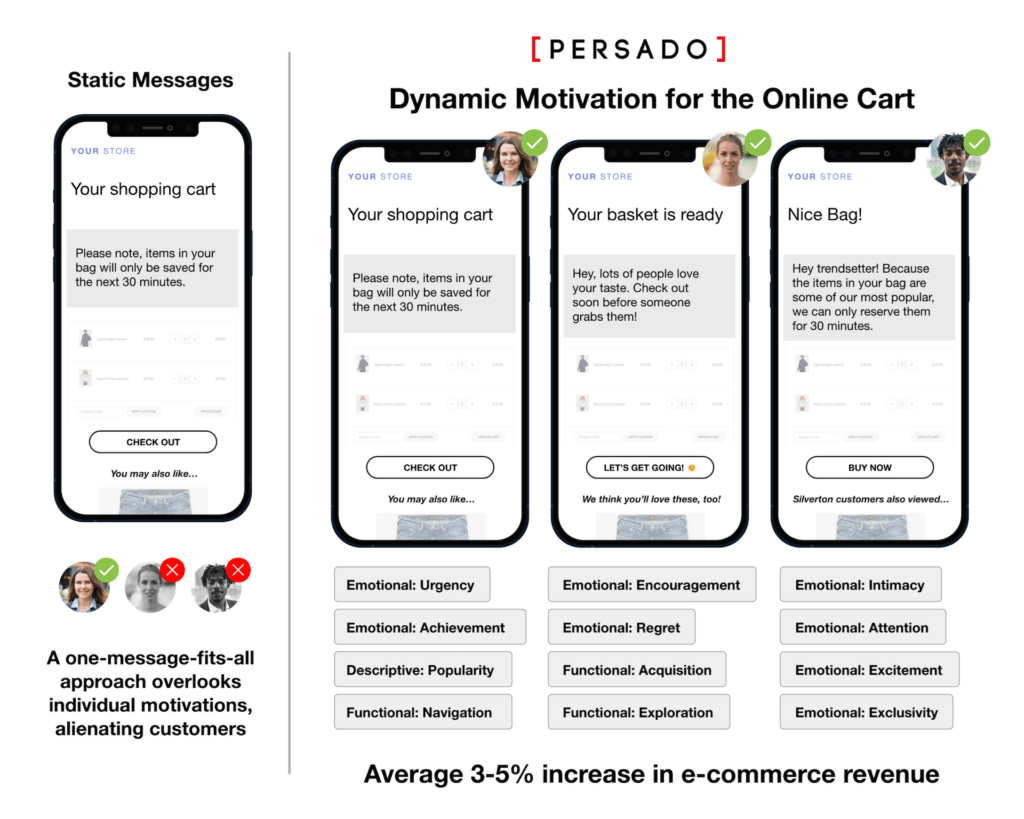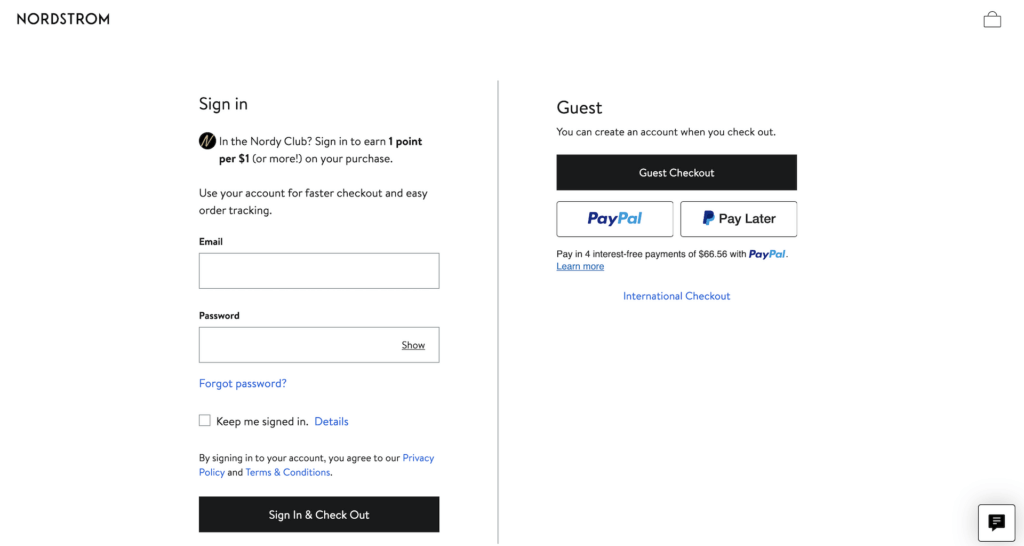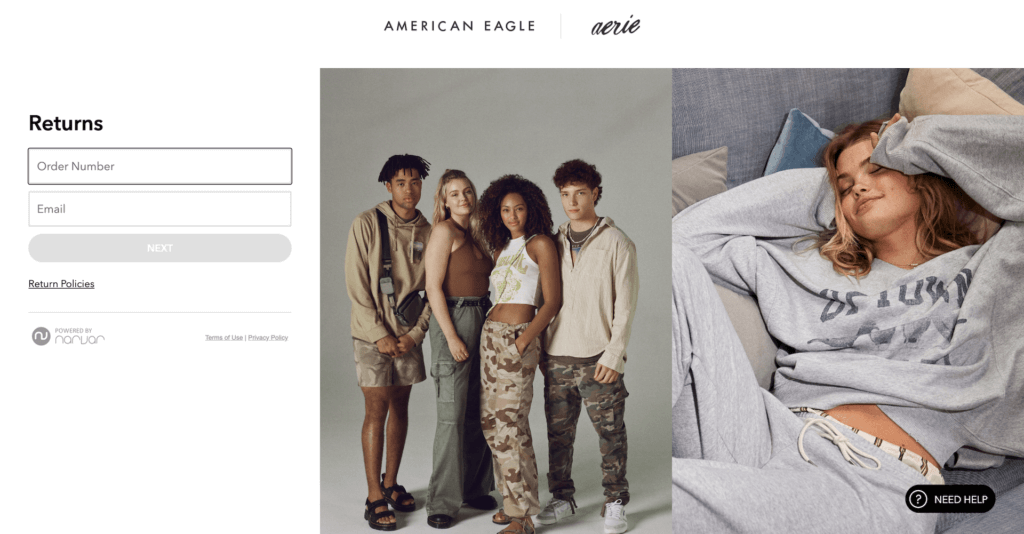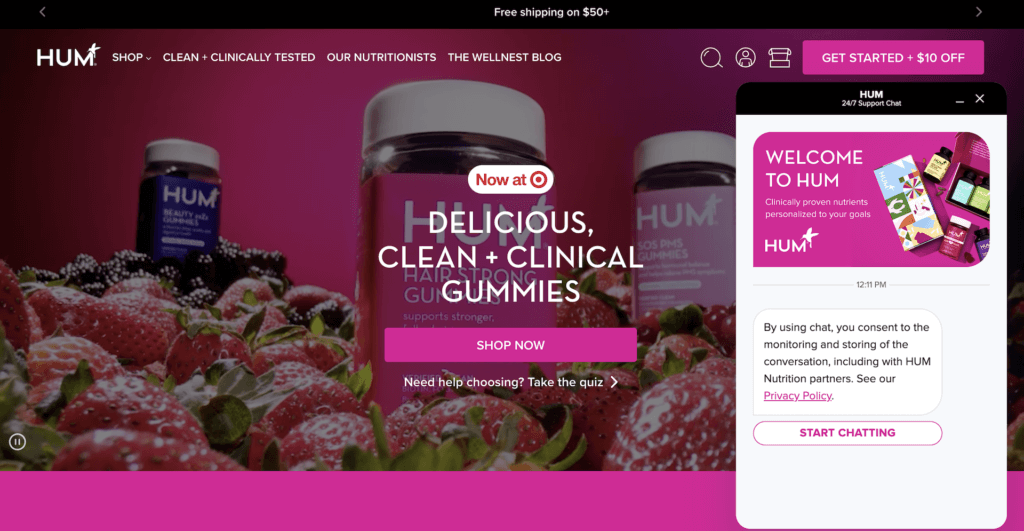July 27, 2023
Abandoned Cart vs. Abandoned Checkout: Why Do Buyers Bounce?
By Liza Colburn

It’s frustrating for digital marketers to look at their monthly analytics and discover that a block of shoppers came this close to buying — only to exit the site. Shopping cart abandonment remains one of the biggest challenges for many online businesses. To prevent it, digital marketers need to understand the root of the problem: abandoned cart vs. abandoned checkout?
Are customers abandoning their carts or are they abandoning the checkout process? Let’s explore the differences and some of the solutions for each.
Abandoned Cart vs. Abandoned Checkout
First, some definitions.
The abandoned cart rate is the percentage of customers who place an item in a cart, then leave without completing a purchase, even if they still continue to browse.
Abandoned checkout rate is the percentage of customers who put an item in the cart and proceed to the checkout process, but abandon the purchase at some point during checkout.
Whether the issue is technically an abandoned cart vs. abandoned checkout is not clear for your e-commerce site’s shopping cart abandonment rate, which reflects both. The reason is that you calculate the rate by dividing the total number of completed transactions by the number of initiated sales and then subtracting the result from one and then multiplying by 100.
Research from Baymard Institute finds that the shopping cart abandonment rate in 2023 reached 70.19%. That means, for every 10 customers who add an item to an e-commerce shopping cart, seven leave a site without completing their purchase.
If you want to improve that rate for your business, you need to understand the root cause of the problem. That requires you to understand the different points at which people leave: abandoned cart vs. abandoned checkout (or a bit of both)? Also, why they decided not to move forward at that particular step.
Understanding Abandonment Statistics
Abandoned cart benchmarks vary by industry, as well as business size. For example, the cruise and travel industry maintains one of the highest abandoned cart rates, at 98%. PayPal’s research data from the second quarter of 2022 sheds some insight on the overall abandonment rate for desktop and mobile platforms:
- E-commerce desktop abandonment rate was 72%.
- Mobile abandonment rate was 84%.
Studies show that shopping cart abandonment rates peak each December when Black Friday and holiday sales lure impulsive prospects and window shoppers. To get at the root of the problem, it helps to understand why people are leaving.
Why Do Shoppers Abandon the Cart vs. Abandon Checkout Processes?
The psychology of shopping cart abandonment remains complicated, but developing insight on why some customers leave e-commerce sites without purchasing can help your brand bridge the gap and improve their abandoned cart recovery rate. Below are some of the top reasons people abandon a purchase:
Waning Product Interest (shopping cart abandonment)
Shoppers love to browse, especially on mobile devices. Given the massive volume of email and text marketing the average consumer receives, it should come as no surprise that some of those headlines hit their mark and compel a consumer to click through. But, that doesn’t mean the customer is ready to buy. A share of those abandoned carts come from customers who were curious but not truly in the market to buy at the moment.
Can they be convinced? Making products more appealing can encourage impulse sales, for example. Retailers see better checkout results when they:
- Invest in quality photography and video demonstrations
- Show product thumbnails throughout the buying journey
- Showcase customer reviews
If product inventory is low, including some language like “Only 5 more” on the product page can motivate sales. Providing as much compelling information as possible (including social proof) often helps convert a window shopper to a paying customer.
Mandatory Account Creation (checkout abandonment)
Many businesses prompt online shoppers to create an account at the beginning of the checkout process. In some cases, the customer can’t move to make their payment and complete the purchase if they don’t fill out the account form fields. Since this requires extra effort, many consumers might not see the point, especially for one-time purchases.
Businesses rely on this information to retarget customers with emails and boost lead generation—something customers know and resist. First-time buyers may not want to provide email addresses or allow the company to store their credit card information. From the customer’s point of view, creating a new account also means remembering yet another password.
All those issues may have a negative impact on your shopping cart abandonment rate. If your e-commerce site makes account creation mandatory, evaluate what is more important— completing a sale or adding prospects to your database.
Website Security Concerns (checkout abandonment)
Red flags like outdated website design, no SSL certificate, or an unusual payment gateway often contribute to checkout abandonment. According to the Baymard Institute, 18% of consumers are reluctant to provide their credit card details to e-commerce sites they don’t trust. A lack of social proof—such as product reviews and customer testimonials—adds suspicion and may hinder sales.
What Can Brands Do to Discourage Both Shopping Cart Abandonment and Checkout Abandonment?
Brands must remain on high alert to monitor shopping cart and checkout abandonment activities and engage in problem solving to understand the reason why. Below are solutions to incorporate into your customer experience to help improve your completed conversions regardless of whether you struggle with shopping cart abandonment vs. checkout abandonment or both).
Solution #1: Speak to Your Customer As If You Know Them Personally
Words are just as important as images and website design. Persado Dynamic Motivation takes the online cart from static to dynamic by leveraging a brand’s session data to inform the Motivation AI platform to deploy messages that will appeal to that specific customer in real-time.
The result? Customers receive exactly the right message to motivate them to complete their purchase. Enterprise brands across retail and travel can expect ROI from this cart abandonment software within a matter of weeks, often days. Brands that apply Dynamic Motivation to the online cart see a 3-5% increase in e-commerce revenue. Request a 60-day trial and try it risk free with no commitment.
Why do Persado clients use and trust Dynamic Motivation?
- To automate decisions by continuously serving the best performing words and phrases to each individual consumer.
- To produce the most impactful language at a most crucial time in the customer journey.
- To enhance the online shopping cart from static to personalized dynamic language.

#2 Provide a Guest Checkout Option
To encourage more online sales, give your customers the option to sidestep account creation. This reduces the time to complete the transaction. More importantly, it allows those who don’t wish to share their personal information to complete a purchase confidently. With guest checkout, e-commerce sites do not store credit card information and use email addresses only for delivery updates.

For more reassurance, let consumers know your brand is Payment Card Industry Data Security Standard (PCI-DSS) compliant. PCI-DSS represents a widely accepted set of policies and procedures intended to optimize the security of credit, debit and cash card transactions and protect cardholders against misuse of their personal information.
#3 Offer a Solid Refund and Returns Policy
Finding the sweet spot for refunds and returns can be a challenge. Overly lenient refund and return policies chip away at profit margins, but customer-friendly guidelines help build trust.
The standard return window for most retailers stands at 30 days. Some retailers go above that. Costco reigns supreme with its generous return policy. Members can return many items at any time for cash or a check refund. American Eagle accepts returns any time as long as the customer presents proof of purchase (such as a receipt, invoice, order confirmation email, order details page or order confirmation page). Athleta shoppers enjoy the Give-It-a-Workout-Guarantee, which allows customers to try out an item. If it doesn’t perform as expected, the customer can return it within 60 days.

#4 Offer Live Chat For Support
Unaddressed complaints or questions can push customers off your site, especially if they expect an easy and quick resolution. Live chat support provides a prompt response and often encourages a purchase. A live chat implies a near-instantaneous response, so brands need to deliver that.
Chatbots run 24/7. So they can not only take over outside of business hours, but also take over low level, repetitive questions so your CX team can focus on more complex tasks. Be transparent about the AI and give customers the option to request assistance from a human if their issue remains unresolved.

Ready to improve your brand’s shopping cart abandonment stats? Persado is the only Generative AI company that creates a personalized language experience through words and phrases proven to increase conversions across the customer journey – especially for the online shopping cart. Request a free trial.